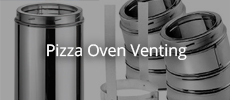Announcement
Collapse
No announcement yet.
Thailand Barrel Dome Build - $400 to completion (my labour free!)
Collapse
X
-
Nearly there... AAC blocks rendered with special AAC render with fiberglass strands added, then rendered over the top of this with a more traditional cement and sand render with a waterproofing agent and fiberglass strands added. I'd love to say that this was me, but rendering this dome shape over the top of blocks that by their nature are a series of straight blocks is way beyond me. My good friend did this for me and I am super pleased!
I'm now just waiting for it to dry out properly over the next month, seal it (concrete sealer), paint it (roof paint), install the chimney, and we are back in business!
I'm pretty stoked with how it is looking. My friend is a star!Last edited by JimShortz; 04-14-2021, 07:34 AM.
- Likes 2
Leave a comment:
-
Thanks for that - and there is the proof that there is nothing new under the sun! Mine is very similar with the bolts through, but I opted to face with steel. and have mine fit flush against the oven's reveal. I might go for the idea of adding an additional wooden face though; especially since I have now established the steel doersn't get that hot (so the wood should be fine) - cheers! :-)Originally posted by cobblerdave View PostG’day
If you follow the link at the bottom of my post you’ll go to my door construction.
Basically a wood face with a AAC block back stuck on with silastic. The AAC provides plenty of protection for the silastic witch is good for 600C from memory.
The doors now got to be 8 years of service now couple of chips and cracks but still does the job it was made for.
Regards Dave
Leave a comment:
-
G’day
If you follow the link at the bottom of my post you’ll go to my door construction.
Basically a wood face with a AAC block back stuck on with silastic. The AAC provides plenty of protection for the silastic witch is good for 600C from memory.
The doors now got to be 8 years of service now couple of chips and cracks but still does the job it was made for.
Regards Dave
Leave a comment:
-
I'm not sure my decisions were that well thought through, lol. I used the forms and design provided by a friend who has just built his own wfo! I had the same thoughts about the end walls being better positioned internally, but since his has had no problems I went with what he had done. This also avoided the shaping of endless fire bricks to fit under the arch...Originally posted by david s View PostOne of the problems of a barrel arch is the inherent instability of its semicircular form. This usually then requires either steel bracing or buttressing of the wall to counteract the tendency of outward thrust on the walls. It appears as though you have not used a hemisphere, but gone for a catenary archeo overcome this problem. Unfortunately to design an oven with its internal height half of its base results in walls that slope in considerably at the base. I see you have made a compromise here by making the oven pretty tall in relation to its base. Many kilns have used catenary arches for the same reason. The end walls for such a structure are better placed under the vault to avoid the outward thrust tending to push them out. To build end walls leaning against the vault like this is not recommended in kiln design, but you may get away with it for an oven as there is around half the maximum temperature to that of a kiln and hence half the expansion. However the same principle still applies.You may have trouble down the track with many heat and cooling cycles and the resulting expansion and contraction. The weak point is the vertical joints at the corners which all line up.
By the way I am a big fan of catenary arches.
https://community.fornobravo.com/for...kiln#post14564
If you look on the pics of my bare arch you will see it isn't really catenary, but not a true hemisphere either. The outer walls are much more of a catenary shape, designed to allow for even more insulation on the top of the arch - and because I liked the shape!. I am hopeful that with the outer shell of blocks and the glass fibre reinforced render that is coming soon it will all hold up well! The inner fire bricks also have very thin mortar joints and are shaped to fit well - hopefully this will also limit movement. We shall see!
Thank you for your thoughtful comments :-)Last edited by JimShortz; 03-15-2021, 02:37 AM.
Leave a comment:
-
One of the problems of a barrel arch is the inherent instability of its semicircular form. This usually then requires either steel bracing or buttressing of the wall to counteract the tendency of outward thrust on the walls. It appears as though you have not used a hemisphere, but gone for a catenary archeo overcome this problem. Unfortunately to design an oven with its internal height half of its base results in walls that slope in considerably at the base. I see you have made a compromise here by making the oven pretty tall in relation to its base. Many kilns have used catenary arches for the same reason. The end walls for such a structure are better placed under the vault to avoid the outward thrust tending to push them out. To build end walls leaning against the vault like this is not recommended in kiln design, but you may get away with it for an oven as there is around half the maximum temperature to that of a kiln and hence half the expansion. However the same principle still applies.You may have trouble down the track with many heat and cooling cycles and the resulting expansion and contraction. The weak point is the vertical joints at the corners which all line up.
By the way I am a big fan of catenary arches.
Leave a comment:
-
Welcome to the world of multi-day cooking - it's one of the things we love the most about having the WFO!
- Likes 1
Leave a comment:
-
So, I said I would report back on temperature...
I closed it up yesterday evening having had it nice and hot for making pizza. I closed it up with both the chunky internal door and my single skin external door. From what I could see before going to bed the outside of the chunky door never got above 65C (150F) and was about 55C (130F) this morning (with the external door fully closed too, so head somewhat trapped in that void, albeit with an open chimey to vent heat).
When cooking pizza yesterday the oven side walls had maxed at about 450C (840F), and were at about 350c (660F) when I closed it up. There was still with a reasonable amount of chunky embers in the oven when I shut it up.
I opened the door 13 hours later to begin baking and side walls were still at 260C (500F). Pretty happy with that :-)
An hour later I opened her up to check on the pork roast and roast potatoes, walls still at 255C (490F) and spuds and roast looking good.
Cake is next, when it has cooled a bit... :-)
Leave a comment:
-
Nice doors! Let us know how hot your handles get with the use of AAC core. Also my inner door is steel and have found that fitting the outer door can help hold in heat overnight. I don't have any quantifiable measurements but the inner door skin remains much hotter when the outer door prevents direct heat exchange with drafty outside air.
- Likes 1
Leave a comment:
-
-
Door for overnight insulation...
I made this baby today, oven heating as I type! :-)
It's made from 2mm steel and a pair of 7.5cm thick AAC blocks sandwiched between the steel faces and carved to fit the shape. First use later today - I will report back on success, or otherwise...
I have attempted to limit connections between front and rear face, but the 6 bolts are unavaoidable (unless anyone has a better idea!), and along the bottom I made the steel panels only connect along about 30% of the edge (see photos).
Yes, I know I am not a professional welder. I only have an old stick welder, and although not beautiful, it is strong.
We shall see how it works... :-)
Leave a comment:
-
Those figures, and the thought, are super useful in considering the design. Thank you :-)Originally posted by UtahBeehiver View PostIf you can avoid aluminum as the door material it would be better, it has a very high Thermo Conductivity number (aka K value or the ability to transmit heat). As far as metals, Alum K value is around 220 to 230,
Carbon steel 54 range, Stainless, 14 range. Some builders use wood but it limits temperature range (0.17) you can use for blocking the door. So you can see that AL will transmit heat 16 times more than SS. The insulation will slow the transmission across the middle but not along the perimeter. FYI
Leave a comment:
-
If you can avoid aluminum as the door material it would be better, it has a very high Thermo Conductivity number (aka K value or the ability to transmit heat). As far as metals, Alum K value is around 220 to 230,
Carbon steel 54 range, Stainless, 14 range. Some builders use wood but it limits temperature range (0.17) you can use for blocking the door. So you can see that AL will transmit heat 16 times more than SS. The insulation will slow the transmission across the middle but not along the perimeter. FYI
- Likes 1
Leave a comment:
-
I like your use of AACA panel. I used that under the floor of my oven too, but I like that you also used it for your "walls" around the oven. Very tidy!
- Likes 1
Leave a comment:





Leave a comment: